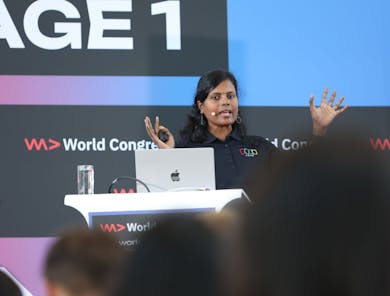In recent years, the digital landscape has transformed dramatically, propelled by the rapid evolution of AI-generated content and the proliferation of disinformation, as well as a greater focus paid to its role in elections (see: Cambridge analytica scandal and how Musk helped elect Donald Trump).
As the boundary between reality and fabrication blurs, we find ourselves in an era where verifying information is more critical than ever. However, the recent news that Mark Zuckerberg’s Meta would be following X in removing content moderation on its platforms, and instead moving to a community note-based system where users flag concerning posts and provide additional information.
The Rising Tide of Disinformation
Disinformation, fueled by advanced AI tools, poses a significant threat to how we consume and interpret information. Unlike traditional misinformation, disinformation is deliberately crafted to mislead, often blending truth with falsehoods to create narratives that manipulate public perception.
From altered text to AI-generated audio and visuals, these tools enable bad actors to spread convincing yet false information with unprecedented speed and scale, and in new and creative forms.
Consider, for example, a scenario where fabricated statements are attributed to public figures. Such content, shared widely without verification, could influence stock markets, sway public opinion, or ignite social unrest. The challenge is not just the creation of these false narratives but also the difficulty in debunking them once they’ve permeated the public consciousness.
Meta’s Moderation Pivot and Its Implications
Meta’s shift from traditional fact-checking to a community-note system highlights a growing tension between promoting free speech and curbing disinformation.
In the announcement released on January 7th, Meta CEO Mark Zuckerberg said “It’s time to get back to our roots around free expression on Facebook and Instagram”, and that the current system had been used to censor certain voices.
It’s time to get back to our roots around free expression on Facebook and Instagram.
— Mark Zuckerberg
This approach emphasizes user participation in evaluating content but leaves room for unchecked narratives to flourish.
Proponents argue that it fosters diverse perspectives and resists censorship, but critics warn that in an era dominated by AI-generated disinformation, the lack of centralised moderation could exacerbate the issue.

Similarly, X’s introduction of its AI system, Grok, with fewer guardrails, underscores the fine line platforms must walk between innovation and responsibility. Without stringent verification mechanisms, such tools risk amplifying false narratives and deepening societal divides.
Societal and Political Ramifications of Disinformation
The consequences of disinformation extend far beyond individual users. When false information spreads unchecked, it can erode public trust, polarize communities, and undermine democratic processes. AI-driven tools can reinforce biases, spearhead propaganda, and manipulate electoral outcomes by presenting false narratives as credible truths.
Anecdotal evidence from recent incidents demonstrates the real-world impact of disinformation. For instance, fabricated stories have led to financial scams, where victims are coerced into impulsive decisions based on false claims. Such cases emphasize the importance of public awareness and robust verification practices to combat the spread of false information.
Verifying Information in an AI-Powered World
In a digital age saturated with content, the responsibility of verifying information falls not only on platforms but also on individual users and developers. Developing critical thinking skills and utilising verification tools are essential steps for combating disinformation. Tools like reverse image search, fact-checking websites, and AI-driven content analysis can help users discern fact from fiction.
For developers, understanding the implications of AI-generated disinformation is vital. While AI tools have made creating and sharing content easier, they also demand a deeper commitment to ensuring ethical usage and robust security measures. Developers must prioritise building applications with verification mechanisms, transparency, and accountability at their core.
Conclusion
In an era defined by rapid technological advancements, the ability to verify information is no longer a luxury but a necessity. Combating disinformation requires a collective effort, combining public awareness, platform accountability, and technical innovation. Developers, in particular, play a pivotal role in designing systems that empower users to navigate a landscape rife with falsehoods.
By investing in education, fostering critical thinking, and leveraging technology responsibly, we can build a digital ecosystem where truth prevails over deception.
As George Proorocu’s presentation aptly highlights, understanding the essence of disinformation and deep-fakery and their implications is key to shaping a more informed and resilient society.











